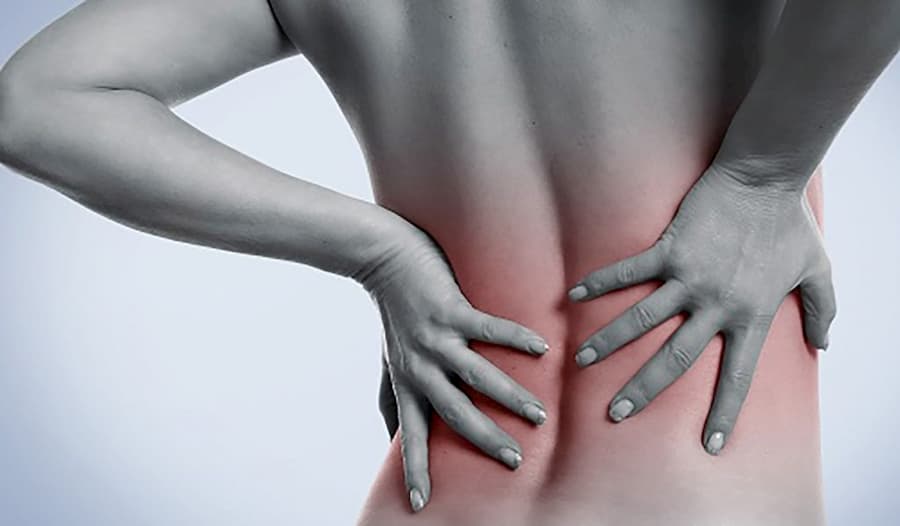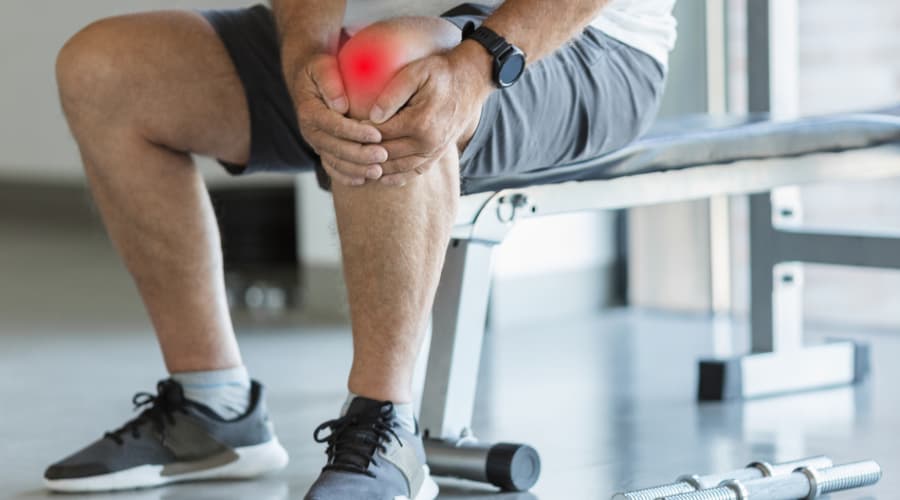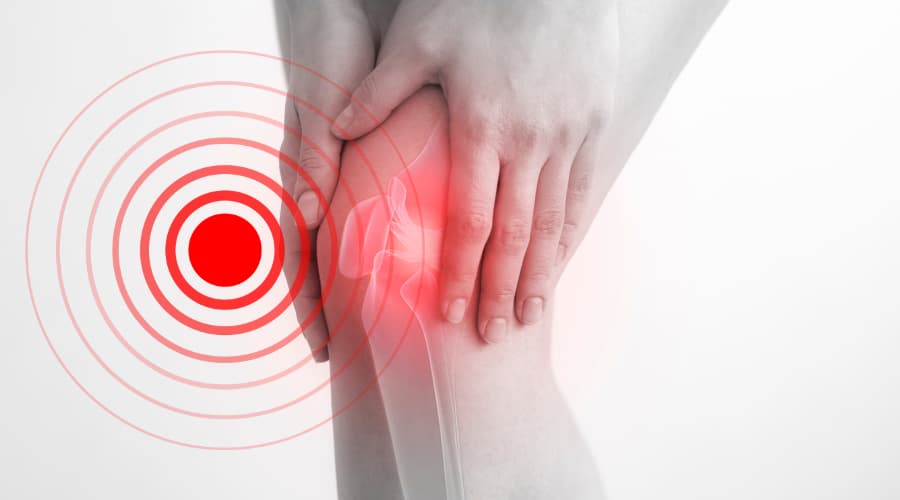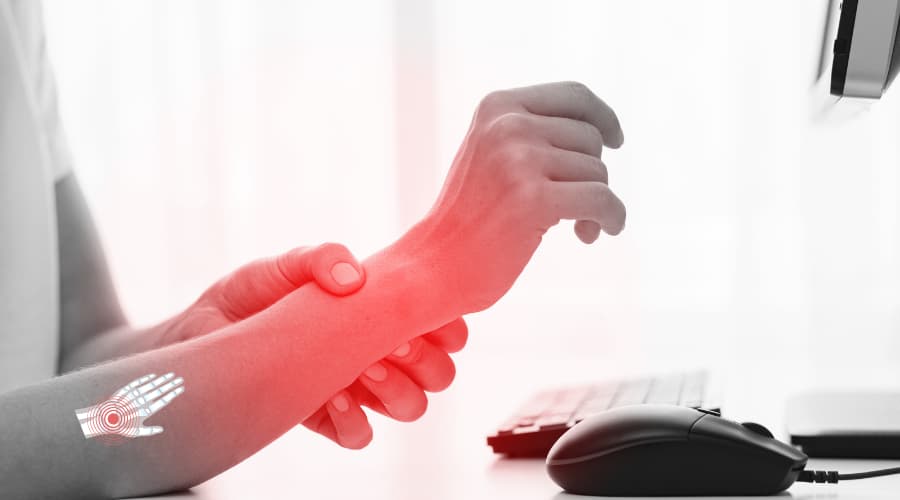The normal aches and pains of working, walking, playing, and general exercise normally go away with a hot bath, or a good night’s rest, but sometimes the aches stay longer than normal, and the muscles just refuse to stretch and move properly. Perhaps, this is the time for a Deep Tissue Massage.
Aching shoulders and a stiff back are only a few of the problems millions face each day. Once you consider the problems with drug cost and underlying health issues, most people are trying to avoid unnecessary medications. Instead, sports massage offers an alternative way to sooth tired or injured muscles without drugs.
The body has muscles and ligaments that make it work. Arms and legs move with precision, eyes blink, and people chat away with little or no effort. When musculoskeletal tissues tighten, they blocks blood flow or press against nerve ending, then pain begins. This pain may be temporary or constant nagging, which spells, chronic pain.
This pain never lets up, even when you sleep. Many choose the path of medication to solve the problem. However, like any form of continuous pain or infection, the body adjusts, and the drug has to get stronger, or it fails to relieve the pain.
Deep tissue massage offers relief from painful muscle discomfort. The deep layer of tissue lying beneath the skin is subject to twist and pulls. The deep tissue massage eases pain in the muscles and surrounding areas.
What is Deep Tissue Massage?
Deep tissue massage firmly moulds the muscles (minus soft tissue) back into shape. This muscular skeletal fabric of the body is not naturally hard; using the hands, elbows, and fingers Deep Tissue Massage softens tight and tough tissue deep inside the muscle structure, this method coaxes the body into relaxing.
When muscles suffer injury or tighten from stress, they sometimes need help to let go and return to normal. Deep Tissue Massage is a vigorous kneading of the muscles through massage therapy, using a variety of massage skill sets. Deep Tissue massage works down into the muscles getting at the core of muscle tightness.
Sports Massage:
Sports massage is generally applied to those utilising their body for extreme exercise activities: soccer players, basketball, football, and hockey. Many of these athletes are on the field of play every day for hours, and their bodies reflect this muscle use.
The average person’s muscle structure is not even close to those on the football field, hockey, or baseball field. These athletes train daily, and the thickness of the muscle structure is far more advanced. The ability of a therapist to target specific muscles is important to these individuals. A dancer may utilise a specific muscle more than a basketball player.
Sports Massage vs Deep Tissue Massage
A sports massage manages the soft part underneath the outer layer of muscle. This massage therapy is more intricate. It requires a highly trained specialist to knead the underlying tissue. The injuries of a seasoned athlete or muscle strain may be more intense and require more invasive massaging than with deep tissue. Understanding the types of muscles in the body makes the difference between injury and a successful massage session.
Deep Tissue Massage is a great method for improving cell recovery. There is no argument, a trained therapist cost. Yet, if you take the time to talk with those recovered from serious injury, they will attest to the need for these massage techniques. In addition, a massage is better than constant pain, or a slow recovery. Protecting the body from unwanted chemicals is always a plus.
Types of Deep tissue Massages:
The body contains 700 muscles that keep it moving. This combination of blood vessels and tendons winds around the body’s skeletal system and only a trained therapist with the knowledge of how they work is able to massage them without injury. Each muscle is designed to work with a selected area of the body. No one really sits around and concentrates on muscles. Thankfully, there trained sports and deep tissue massage therapist waiting to help.
There are many massages types, Swedish, Shiatsu, Thai, Reflexology, Prenatal, Trigger point, Couples, Deep Tissue, Aromatherapy, hot stone. However, the deep tissue massage counteracts pain in the legs, lower back, neck area, and shoulders. These areas face strain every day; even in bed. A poor sleeping position or a mattress that is insufficient can easily cause problems in these areas of the body.
One muscle many complain about after a hard day is the shoulder and neck area. The clavicular head provides movement for the rotation of the head. Too much activity and problems develop with the neck area. Unfortunately, once the neck is affected, shoulder muscles are not far behind. Skilled therapists know the location of this muscle as well as others and know how to massage them with positive results.
How to do a Deep Tissue Massage:
Deep Tissue Massage primarily uses the hands and knuckles to manipulate the muscles. A deep tissue massage involves pressure on the muscles while kneading, circulating the hands, use of vibration on the muscles, and tapping the muscles like bread dough in order to relax tight, bundled up muscles.
Massaging relaxes these muscles allowing blood to flow freely, taking the pressure off nerve endings. Imagine the pressure moving to the deepest fibres of the muscles tissue and pushing out toxins that interfere with healing. The pressure is heavy and feels more intense in some spots due to trigger points.
Benefits of the Deep Tissue Massage:
A deep tissue massage helps stressed muscles relax, the body secrets toxins trapped, which cause pain. The deep tissue massage helps the body release these toxins and restores proper circulation. Many pains that affect people every day are stress related. Fibromyalgia, high blood pressure, and Sciatica are exasperated by stress.
Nerve endings may find relief from pressure after a massage, in addition, when movement is difficult from stiffness in muscles. A massage helps restore the ability to move freely. A favourite use for Deep Tissue Massage is to improve injuries like whiplash and ham strains. Muscles control the back, and front parts of the body, providing control and a series of movement.
- Poor posture
- High blood pressure
- Shoulder muscles
- Tennis elbow
- Carpal tunnel syndrome
- Low back pain
- Sports injuries
- Plantar fasciitis
- Sciatica
- Upper back
- Fibromyalgia
- Osteoarthritis pain
Mobility is important to everyone. It is easy for muscle weakness to develop from lack of use, due to injury, to interfere with lifting or walking. Anyone of the above conditions can make it difficult to care for oneself. A Deep Tissue Massage making it possible to regain lost mobility is worth, the effort of getting a deep tissue massage.
How does the body react to deep tissue massage?
It is possible to feel a bit ill after a massage, if the muscles are very stiff, the massage will release toxins that continue their travel, through the body. In addition, you might feel a little sore. However, using a cold compress will help. Initially the area, you wish to massage may be too sensitive to pressure for massage. However, after a little kneading, the tightness gets better.
Side effects:
Nothing is for everyone. Deep Tissue massage is tough, and gives the muscles a thorough workout, treating reluctant muscles to a much-needed cleaning through massaging action. Spasms in the muscles are painful. This might make a person want to find any form of relief available, however, proceed carefully with any form of pressure on an injury.
Precautions:
Those suffering from blood clots or thrombosis may find the deep tissue massage a danger to their health. Since the process has the ability to move fluids that might lodge itself in the skeletal tissue, likewise, persons experiencing surgery, rash or other infections, radiation or chemotherapy treatments, or any blood-related illness.
- Blood thinner
- Bleeding disorders
- Cancer
Deep tissue may not be the best thing for a pregnant woman, or people with sensitivity to pressure, weak bones, or those subject to bruising may encounter health issues. Furthermore, those suffering from fractures, sores, abdominal hernias, or tumours should avoid deep tissue massage. Like all procedures involving the body, consulting your physician is strongly advised.
Prevent Muscle Knots with a Sport or Deep Tissue Massage:
This form of massage benefits damaged tissue by enabling toxins to move away from inflamed tissue. Fresh blood flow allows relief from swelling, providing, a less painful feeling inside tendons and muscles. During sports activities, major muscles carry the heavy load of activity and are subject to serious injury.
Most people try at home remedies before seeing a Deep Tissue Massage Therapist. However, sometimes rest, and hot and cold compresses do not work. Deep Tissue Massage cares for these areas when necessary.
Does Deep Massages Cause Pain:
Deep Tissue Massage can be painful. If sensitive, sore areas are pressed correctly, the massage may relieve pressure on the area. However, if the body area is too sore, the body may resist and make the massage process even more difficult protecting itself from further pain. This prevents the massage therapist from reaching deep into the skeletal tissue to soothe away knots in the muscles.
Those with a vigorous exercise program have a strong muscle structure and might benefit from a Sports Massages or Deep Tissue Massage. A person with a frail structure might suffer injury from the intense pressure involved with this technique.
Primary Uses for Deep Tissue and Sports massage:
This level of massage assists the healing of sports injuries and chronic pain. There is pain that lasts for a short while, and then there is pain that seems to never end. It simply nags at the body. Some people feel pain is something they must learn to live with. Fortunately, that is not always true. Deep Tissue Massage is one remedy that helps a long list of chronic pain ailments, including hip bursitis and shoulder ailments.
The methods used for the sports massage or deep tissue massage enlist a more pressurised action to reach into the core of the skeletal muscle structure. The elbows and palms carefully handle sore spots on the body to release pain-causing toxins, so healing nutrients can reach these clogged areas.
Although massage is helpful in a number of situations, it is not a cure-all. Some injuries only get better with rest and medication. When the body’s in pain, inflammation cannot be ruled out, as part of the problem. The strength of using deep tissue massages to counteract this inflammation is welcoming to most people. The healing hands of the sport and Deep Tissue Massage therapist changes the lives of millions allowing athletes and average people to get back into activities they enjoy.
Speak to our Tunbridge Wells Sports Massage Therapist for more information, on 01892 543029
Related Articles
- Sports Massage Benefits
- Calf Injuries – Cause, Symptom, Prevention and Tips
- How To Kick Away Typical Football Injuries
- Joint Support for Summer Sport
- Sports Massage Tips for Tight Muscles




